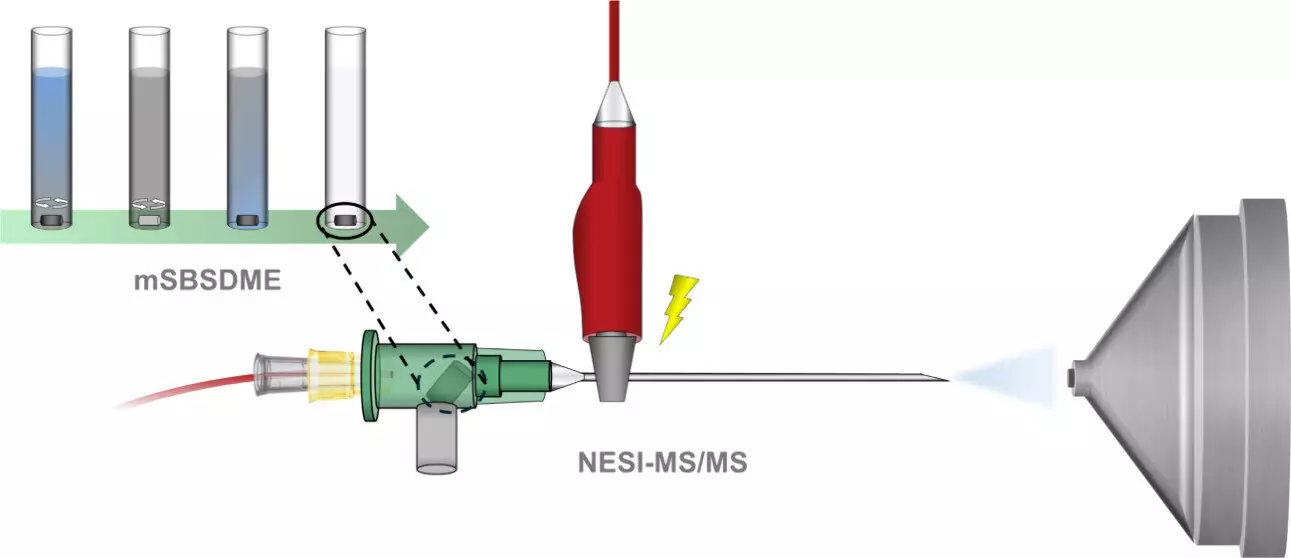In a world where cannabis use is rapidly increasing, particularly in Europe, the ability to quickly and accurately detect THC levels in individuals has become a pressing necessity. The innovative detection technique developed by researchers from the Universities of Cordoba and Valencia offers a groundbreaking solution to this issue. With a staggering 8% of adults reported to have used cannabis in 2022, the demand for efficient and non-invasive testing methods is at an all-time high. Beyond recreational use, the health ramifications associated with cannabis consumption solidify the need for reliable testing to mitigate its potential harms. The emergence of a rapid saliva test that requires minimal sample volume resonates strongly within this context, suggesting a transformative shift for medical and social frameworks dealing with drug use.
Saliva as a Game-Changing Sample Medium
Saliva’s inherent properties make it an ideal candidate for drug testing. As a fluid that is easily obtained and non-invasive, it provides a level of convenience that traditional testing methods, such as blood or urine analysis, cannot match. The latest research has harnessed this advantage by employing only 0.25 mL of saliva to detect THC presence effectively. The diminishing need for larger samples is not merely advantageous; it reflects a growing trend to prioritize user comfort and dignity during medical assessments. As public attitudes towards cannabis shift, so too must our methodologies for monitoring its use, emphasizing non-invasive yet precise techniques that the entire population can embrace.
Innovation at Its Core: Dispersive Microextraction by Sorption
At the heart of this new testing procedure lies the clever application of dispersive microextraction by sorption, enhanced by the integration of a magnetized stirrer bar. This intricate technique enables a vortex to be created in the saliva sample, effectively extracting THC molecules with remarkable efficiency. What stands out is the simplification achieved in the extraction process – reducing what was once a five-step procedure to just two steps, crafting a seamless workflow that enhances both accuracy and speed. The research team has ingeniously combined innovative technology with established chemical principles to achieve results that feel almost revolutionary in the arena of drug analysis.
This efficiency owes itself to precise engineering: tiny magnetic particles are strategically used to capture THC within the saliva. Upon agitation, the stirrer bar disperses these particles, ensuring optimal interaction with the THC, before drawing them back for analysis. The brilliance of such a method not only streamlines the testing procedure but also emphasizes the power of modern science in enhancing our understanding and management of substances that continue to shape societal health discussions.
Practical Applications and Wider Implications
The potential applications of this technology extend far beyond conventional laboratories. As Professor Rafael Lucena noted, this technology is ready to be implemented in routine analysis methods. This could have profound implications for law enforcement, healthcare practices, and workplace drug testing. The convenience and speed of saliva testing can offer immediate insights, thereby shaping policies and responses related to cannabis use significantly. Timely testing mechanisms will play a vital role in fostering responsible consumption and safeguarding public health in an era where cannabis legalization is becoming increasingly common.
Furthermore, the broader healthcare narrative surrounding cannabis–especially as its uses evolve towards medicinal applications–demands accuracy and reliability. By providing a robust solution that can be rapidly deployed, researchers have positioned this technological advancement as a critical tool in managing the health implications associated with both legal and illegal cannabis use.
A Landmark Achievement for Analytical Chemistry
The collaborative effort between the University of Cordoba and the University of Valencia serves as a beacon of what can be accomplished when innovation and scientific rigor come together. By capitalizing on existing methodologies while introducing groundbreaking enhancements, this teamwork represents a significant landmark in analytical chemistry. The integration of affordable materials such as stainless steel needles into the testing apparatus not only promotes accessibility but also reflects a commitment to sustainable practices in scientific exploration.
Anticipation now mounts as this method progresses from concept to practice. With the ongoing evolution of cannabis-related health policies, researchers are poised to influence change in how societies approach drug testing. Providing an efficient, accurate, and non-invasive testing solution sets a precedent for future advancements in healthcare technology, allowing societies to navigate the complexities of drug use responsibly and effectively.
By addressing both practical needs and ethical considerations, this new technology showcases the intersection of science, health, and societal standards. In an era of change, adapting testing methodologies to reflect contemporary challenges is not just preferred, it is essential. Therefore, as we anchor our strategies for monitoring drug use in forward-thinking science, the implications of such advancements will undoubtedly resonate throughout public health, policy, and beyond.

